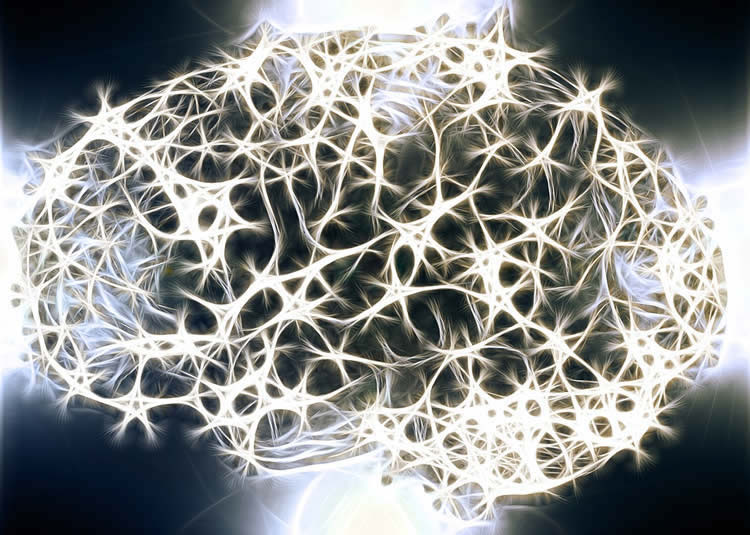Summary: University of Copenhagen researchers have identified two areas of the midbrain that appear to play specific roles in the start, speed and content of dependent selection of locomotion in mice.
Source: University of Copenhagen.
Locomotion, or moving from one place to another, is one of the most fundamental movements we perform. We do it when we want or we need to, and it is a complex sequence from initiating the first step, to stopping when we reach our goal. At the same time, locomotion is executed at different speeds to regulate how fast we travel from one place to another depending on the purpose that drives us.
Now, a new study the scientific journal Nature by researchers Vittorio Caggiano, Roberto Leiras, Haizea Goñi-Erro and colleagues together with Professor Ole Kiehn who lead the study shows that two regions in the midbrain play specific roles in controlling the start, speed and context dependent selection of locomotion in mice. They are called the Cuneiform Nucleus or CnF and the pedunculopontine nucleus or PPN.
“We find that neurons in both PPN and CnF can start locomotion and that activity in these areas contribute to the maintenance and speed regulation of slower locomotion. However, only CnF is able to elicit the high-speed escape locomotor activity. In contrast, activity in PPN neurons favours slow explorative locomotion,” says Professor Ole Kiehn Department of Neuroscience, UCPH.
While the precise coordination of locomotor movements is controlled by neuronal circuits in the spinal cord, the episodic control of locomotion is attributed to descending signals from the brainstem that activate neuronal circuits in the spinal cord.
The midbrain circuits are complex and contain neurons of many different types although the main players are shown to be the so-called glutamatergic neurons.
The researchers have utilised a number of advanced techniques, including optogenetics, to study which types of neurons are involved and the location of the neural networks. By using light and designer drugs, they have been able to activate or inactivate selected groups of nerve cells and then study how this affects the locomotor output in mice.
The researchers identify populations of ‘start neurons’ and show, for the first time, how the two regions in the midbrain can act both in common or separately to control speed and to select context dependent locomotor behaviours.

“By identifying the midbrain ‘start’ neurons we complement a previous study where we found ‘stop cells’ in the brainstem that halt locomotion. Together, the start and stop cells define the episodic nature of locomotion,” says Ole Kiehn.
The study breaks new grounds in locomotor control and is important for understanding the normal brain function in mice. And the authors believe that the results might benefit humans with disabled locomotion as well.
“In Parkinson’s disease which affect the basal ganglia – one of the main source of inputs to the PPN – gait disturbances and freezing of gait are very pronounced. By implanting fine electrodes in the brain – a technique called deep brain stimulation which is already used to treat some symptoms in Parkinson’s disease – circuits in either CnF or PPN might now be targeted with new precision and used to increase the locomotor capabilities. Similar approaches may also be attempted after damage to the spinal cord, where initiation of locomotion is strongly affected,” says Ole Kiehn.
Funding: The research funded by ERC advanced grant (LocomotorIntegration), Novo Nordisk Foundation (Laureate Award), NINDS, and The Swedish Research Council.
Source: Ole Kiehn – University of Copenhagen
Publisher: Organized by NeuroscienceNews.com.
Image Source: NeuroscienceNews.com image is in the public domain.
Original Research: Abstract for “Midbrain circuits that set locomotor speed and gait selection” by V. Caggiano, R. Leiras, H. Goñi-Erro, D. Masini, C. Bellardita, J. Bouvier, V. Caldeira, G. Fisone & O. Kiehn in Nature. Published online January 17 2018 doi:10.1038/nature25448
[cbtabs][cbtab title=”MLA”]University of Copenhagen “Midbrain ‘Start Neurons’ Control Whether We Run or Walk.” NeuroscienceNews. NeuroscienceNews, 17 January 2018.
<https://neurosciencenews.com/midbrain-run-walk-8329/>.[/cbtab][cbtab title=”APA”]University of Copenhagen (2018, January 17). Midbrain ‘Start Neurons’ Control Whether We Run or Walk. NeuroscienceNews. Retrieved January 17, 2018 from https://neurosciencenews.com/midbrain-run-walk-8329/[/cbtab][cbtab title=”Chicago”]University of Copenhagen “Midbrain ‘Start Neurons’ Control Whether We Run or Walk.” https://neurosciencenews.com/midbrain-run-walk-8329/ (accessed January 17, 2018).[/cbtab][/cbtabs]
Abstract
Midbrain circuits that set locomotor speed and gait selection
Locomotion is a fundamental motor function common to the animal kingdom. It is implemented episodically and adapted to behavioural needs, including exploration, which requires slow locomotion, and escape behaviour, which necessitates faster speeds. The control of these functions originates in brainstem structures, although the neuronal substrate(s) that support them have not yet been elucidated. Here we show in mice that speed and gait selection are controlled by glutamatergic excitatory neurons (GlutNs) segregated in two distinct midbrain nuclei: the cuneiform nucleus (CnF) and the pedunculopontine nucleus (PPN). GlutNs in both of these regions contribute to the control of slower, alternating-gait locomotion, whereas only GlutNs in the CnF are able to elicit high-speed, synchronous-gait locomotion. Additionally, both the activation dynamics and the input and output connectivity matrices of GlutNs in the PPN and the CnF support explorative and escape locomotion, respectively. Our results identify two regions in the midbrain that act in conjunction to select context-dependent locomotor behaviours.
“Midbrain circuits that set locomotor speed and gait selection” by V. Caggiano, R. Leiras, H. Goñi-Erro, D. Masini, C. Bellardita, J. Bouvier, V. Caldeira, G. Fisone & O. Kiehn in Nature. Published online January 17 2018 doi:10.1038/nature25448






